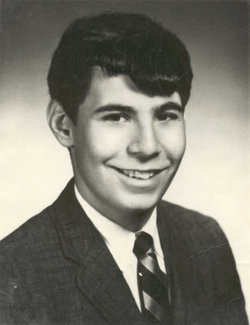Today is the 50th anniversary of the Kent State massacre, when on May 4, 1970, American college students protesting the bombing in Southeast Asia, came under fire from the Ohio National Guard, resulting in the death of four students with several others injured. The killings sparked outrage across American campuses and is indelibly marked on the American conscious.
What many don't know is the Jewish dimension to that tragedy.
Even though Jews were only about 5% of the student body at Kent State, that three of the four students murdered on that day were Jewish, was "an extremely unlikely mathematical probability."
May our young people never again come to harm at the hand of its own government. God Bless America.
At 11 p.m. on May 3, a group of marchers will begin a candlelight vigil at Kent State University in Ohio to recall what is for many a distant echo from another era. Forwarding the News Thoughtful, balanced reporting from the Forward and around the web, bringing you updated news and analysis each...

forward.com
The victims:

en.wikipedia.org

en.wikipedia.org

en.wikipedia.org

en.wikipedia.org
Am I supposed to feel sympathy here? The ONLY ones I have sympathy for were the two who weren't part of the riot
On April 1, 1969, SDS members attempted to enter the administration building with a list of demands where they clashed with police. In response, the university revoked the Kent State SDS chapter charter. On April 16 a disciplinary hearing involving two of the protesters resulted in a confrontation between supporters and opponents of SDS. The
Ohio State Highway Patrol was called and 58 were arrested. Four SDS leaders spent six months in prison as a result of the incident.
[12]
On April 10, 1970,
Jerry Rubin, a leader of the
Youth International Party (also known as the Yippies), spoke on campus. In remarks reported locally, he said "The first part of the Yippie program is to kill your parents. They are the first oppressors." Two weeks after that, Bill Anthrell, an SDS member and former student, distributed flyers to an event in which he said he was going to
napalm a dog. The event turned out to be an anti-napalm
teach-in.
[12]
another rally was planned for May 4 to continue the protest of the
expansion of the Vietnam War into
Cambodia. There was widespread anger, and many protesters issued a call to "bring the war home". A group of history students buried a copy of the
United States Constitution to symbolize that Nixon had killed it.
[13] A sign was put on a tree asking "Why is the
ROTC building still standing?"
[14]
Trouble exploded in town around midnight, when people left a bar and began throwing beer bottles at police cars and breaking windows in downtown storefronts. In the process they broke a bank window, setting off an alarm. The news spread quickly and it resulted in several bars closing early to avoid trouble. Before long, more people had joined the vandalism.
By the time police arrived, a crowd of 120 had already gathered. Some people from the crowd lit a small bonfire in the street. The crowd appeared to be a mix of bikers, students, and transient people. A few members of the crowd began to throw beer bottles at the police, and then started yelling obscenities at them. The entire Kent police force was called to duty as well as officers from the county and surrounding communities. Kent Mayor
LeRoy Satrom declared a
state of emergency, called the office of Ohio Governor
Jim Rhodes to seek assistance, and ordered all of the bars closed. The decision to close the bars early increased the size of the angry crowd. Police eventually succeeded in using
tear gas to disperse the crowd from downtown, forcing them to move several blocks back to the campus.
[9]
Saturday, May 2Edit
City officials and downtown businesses received threats, and rumors proliferated that radical revolutionaries were in Kent to destroy the city and university. Several merchants reported they were told that if they did not display anti-war slogans, their businesses would be burned down. Kent's police chief told the mayor that according to a reliable informant, the
ROTC building, the local army recruiting station, and post office had been targeted for destruction that night.
[15] There were unconfirmed rumors of students with caches of arms, plots to spike the local water supply with
LSD, of students building tunnels for the purpose of blowing up the town's main store.
[16] Mayor Satrom met with Kent city officials and a representative of the
Ohio Army National Guard. Following the meeting, Satrom made the decision to call Governor Rhodes and request that the National Guard be sent to Kent, a request that was granted. Because of the rumors and threats, Satrom believed that local officials would not be able to handle future disturbances.
[9]
The decision to call in the National Guard was made at 5:00 p.m., but the guard did not arrive in town that evening until around 10 p.m. By this time, a large demonstration was underway on the campus, and the campus
Reserve Officers' Training Corps (ROTC) building was burning.
[17] The arsonists were never apprehended, and no one was injured in the fire. According to the report of the
President's Commission on Campus Unrest:

 forward.com
forward.com

 en.wikipedia.org
en.wikipedia.org

 en.wikipedia.org
en.wikipedia.org

 en.wikipedia.org
en.wikipedia.org

 en.wikipedia.org
en.wikipedia.org






